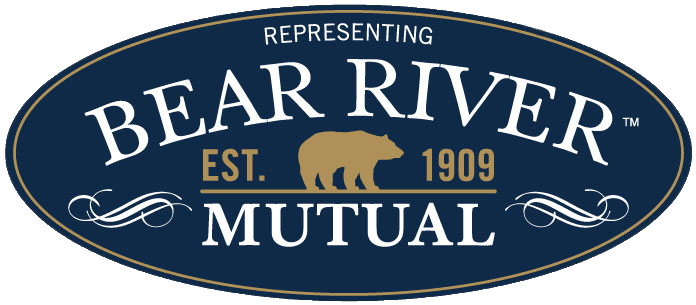Navigating your health insurance policy, specifically, your prescription drug coverage, can feel incredibly overwhelming and, for many, confusing. The lack of clarity when it comes to medical drug coverage can be frustrating, which is why understanding your plan’s formulary is key on your journey to feeling better and using your insurance policy to the fullest.
The more details you know about your prescription drug plan, the better you’ll be able to take charge of your health and wellness. Today, we’re diving into the basics of medication formularies and how you can make the most of your plan.
Continue reading to learn more below.
What is a Drug Formulary?
A drug formulary is a list of brand names and generic prescription drugs that are covered by your health insurance plan. It’s essentially a list of your prescription drug coverage.
Non-formulary drugs usually only include brand-name meds and are associated with extremely high out-of-pocket expenses. Your policy might only help you pay for the prescription medications listed on their formulary. It is their way of providing a wide range of the least expensive yet effective prescription drugs.
Many insurance plans have copays of $5, $10, $15, $20, or more, depending on the specific medication. However, some medications are covered at 100%, meaning there is a $0 copay for you. Some brand-name drugs found on the formulary require patients to pay a certain percentage of them, making the out-of-pocket expense a lot higher.
What Are Formulary Tiers?
The prescription drug plan is often divided into three or four categories or levels. These categories are referred to as tiers. Drugs are placed into tiers based on the type of drug: specialty, preferred brand, non-preferred, and generic. Here is what standard formulary tiers look like:
TIER 1 — Tier 1 medications are typically generic drugs and have the lowest copays.
TIER 2 — Tier 2 copays will cost more than tier 1 copays. This tier includes nonpreferred generic and brand-name drugs.
TIER 3 — Tier 3 includes preferred and nonpreferred brand name meds, as well as generic options. The out-of-pocket expense for patients is higher than tiers 1 and 2.
TIER 4 — Tier 4 includes specialty drugs and all others, and the out-of-pocket cost is highest here. Specialty medications treat severe or rare medical conditions.
Some insurance policies have more than four tiers, while others only have two or three, but the idea and gist of how they work are all the same. The lower the tier, the less the drug will cost. The higher the tier, the more it will cost.
Medications and tiers can vary from one plan to the next, as well as from one company to the next. So, check your insurance company’s formulary lists closely. One company might have a drug in tier 1 in one plan, but in another plan, it’s in tier 2.
It’s always good to remember that what one insurance company deems as a tier 1 medication might differ from a different insurance provider.
Where to Find Your Plan’s Drug Formulary
Most drug formularies and medical drug coverage can be found on your health insurance provider’s website. You’ll need to know the name of your plan to check the formulary associated with your plan.
If you’re unable to find it, you can email or call your insurer for more information. If you are looking for a new policy, most formularies will be linked somewhere on the benefits and coverage summary page.
The specifics of an exceptions process can look different from one provider to the next; however, they all have some common denominators:
- Your healthcare provider will need to confirm you need the prescribed drug.
- Your physician must explain that your plan’s covered drugs will not treat as effectively or efficiently as the prescribed drug.
- Your doctor believes that the covered drugs on your plan could be harmful.
- Your plan only covers dosages of the medication that is not effective for you.
Drugs that are approved during the exception process are often placed on the highest tier. So make sure you are prepared to pay an amount comparable to the most expensive medications on your plan. If your insurer does not approve your request, there are still options. Once your insurance provider explains their decision, you can make an internal or external appeal.
Do Healthcare Providers Have Access to Drug Formularies?
Some health insurance policies share their formularies and prescription drug plans with providers; however, the responsibility to share this information falls on the patient’s shoulders. Here’s what you can do to ensure your healthcare provider is on the same page as you:
- Communicate With Your Physician — Give your formulary to your doctors. Ask them for a prescription that meets your treatment needs from that list.
- Explore Generic Options — Ask about generic options found in the first two tiers of your formulary list.
- Petition With Your Provider — You might be your own number-one advocate for your health, but your doctor is likely in line right behind you. If your provider really believes you should be on a non-covered drug, ask them to take up your cause alongside you. Your physician’s support could help other patients get their medications covered, too!
What to Do When Medications Are Not On the Plan’s Formulary
Good news! The steps necessary to get your insurance plan to cover a drug that’s not on your medical drug coverage list are more straightforward than you might think! All insurance providers have an “exceptions process,” which will require you to submit an online form or fill out some paperwork and mail it in.
Looking for the Best Health Insurance Policy? Contact Bear River Mutual Insurance!
Health insurance plans and the prescription drug coverage they offer can be confusing, but the pros at Bear River Mutual Insurance are here to answer your questions and make things easier.
If you need health, auto, life, or another type of insurance and live in or around Provo, Orem, or Salt Lake City, contact Bear River Mutual Insurance today. Our knowledgeable and trusted team of professionals can help you find a policy that is the perfect balance of meeting your specific needs and staying within your budget. Contact our team to get a free quote today.




